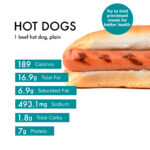How Much Difethialone Will Kill A Dog
How Much Difethialone Can Kill a Dog: Facts, Risks, and Prevention Tips
Difethialone is a highly toxic anticoagulant rodenticide that can cause serious harm to pets and wildlife if ingested. This potent poison works by interfering with the blood-clotting process, leading to internal bleeding and death within days or weeks. Unfortunately, many dogs are exposed to difethialone when they eat baited traps or dead rodents that contain this deadly substance. In this article, we will explore how much difethialone can kill a dog, what are the signs of poisoning, how to treat it, and how to prevent it from happening.
What is Difethialone?
Difethialone is a second-generation anticoagulant rodenticide that was developed in the 1990s as a more potent and longer-lasting alternative to first-generation poisons like warfarin and chlorophacinone. It works by inhibiting vitamin K epoxide reductase, an enzyme that recycles vitamin K in the liver. Vitamin K is essential for the production of clotting factors in the blood, which help stop bleeding when tissue is damaged. When vitamin K is depleted by difethialone, the clotting factors become inactive, leading to spontaneous hemorrhaging in the body.
Difethialone has a half-life of about 20-30 days in rats and mice but can persist for months in tissues like liver and fat. This means that even small amounts of difethialone can accumulate over time and cause cumulative toxicity in predators that eat poisoned prey. Dogs are particularly vulnerable to difethialone poisoning because they are more likely than cats or other animals to scavenge or hunt rodents.
How Much Difethialone Can Kill a Dog?
The lethal dose of difethialone for dogs varies depending on many factors, such as the dog’s weight, age, health status, and the amount and concentration of difethialone ingested. According to the National Animal Poison Control Center (NAPCC), the minimum toxic dose of difethialone in dogs is 0.3 mg/kg, while the lethal dose is estimated to be between 2-5 mg/kg. This means that a 10-pound dog could die from eating as little as one bait containing 0.03% difethialone, while a 100-pound dog might need to consume several baits with higher concentrations to reach a fatal level.
However, it’s important to note that individual dogs may have different tolerances for difethialone and may react differently based on their metabolism and other factors. Some dogs may show signs of poisoning at lower doses than expected, while others may not show any symptoms until days or weeks later when the poison has already caused irreversible damage.
What Are the Signs of Difethialone Poisoning in Dogs?
The symptoms of difethialone poisoning in dogs can be subtle or severe depending on the dose and duration of exposure. Some common signs include:
– Loss of appetite
– Weakness
– Lethargy
– Pale gums
– Increased thirst and urination
– Nosebleeds
– Bruising or bleeding from gums, eyes, or nose
– Blood in urine or feces
– Vomiting
– Diarrhea
If your dog shows any of these signs after suspected exposure to difethialone, you should seek veterinary care immediately. Delayed treatment can lead to irreversible organ damage and death.
How Is Difethialone Poisoning Treated in Dogs?
The treatment for difethialone poisoning in dogs depends on the severity and timing of the symptoms. If caught early, your veterinarian may induce vomiting and administer activated charcoal or other adsorbents to prevent further absorption of the poison. They may also give your dog vitamin K supplements or plasma transfusions to replenish the clotting factors.
If the poisoning is advanced, your dog may need hospitalization and intensive care, including intravenous fluids, oxygen therapy, and blood transfusions. In some cases, surgery may be necessary to control bleeding or remove affected tissues.
The prognosis for difethialone poisoning in dogs varies depending on the extent of organ damage and the response to treatment. Some dogs may recover fully with prompt and aggressive therapy, while others may suffer long-term complications or die despite treatment.
How Can You Prevent Difethialone Poisoning in Dogs?
The best way to prevent difethialone poisoning in dogs is to avoid using rodenticides altogether or use them only as a last resort and under strict supervision. If you must use baits or traps, follow these tips:
– Choose bait formulations that are less toxic or have bittering agents to deter accidental ingestion by pets.
– Place bait stations in areas where pets cannot access them, such as behind heavy furniture or inside locked cabinets.
– Use tamper-resistant traps that require a key or tool to open.
– Check bait stations and traps frequently for any signs of disturbance or damage.
– Dispose of dead rodents properly and promptly to prevent scavenging by pets.
In addition, you should train your dog to avoid eating anything outside the home and supervise them when they are outside. If you suspect your dog has ingested any poison, contact your veterinarian immediately and bring any packaging or samples with you for identification.
Conclusion
Difethialone is a potent rodenticide that can kill dogs if ingested in sufficient amounts. The lethal dose of difethialone varies depending on many factors, but even small amounts can cause cumulative toxicity over time. The signs of difethialone poisoning in dogs can be subtle or severe and require prompt veterinary care to prevent irreversible damage. The treatment for difethialone poisoning in dogs involves induction of vomiting, decontamination, vitamin K supplementation, and supportive care. The best way to prevent difethialone poisoning in dogs is to avoid using rodenticides or use them only with extreme caution and supervision. By following these tips, you can keep your dog safe from this deadly poison.



